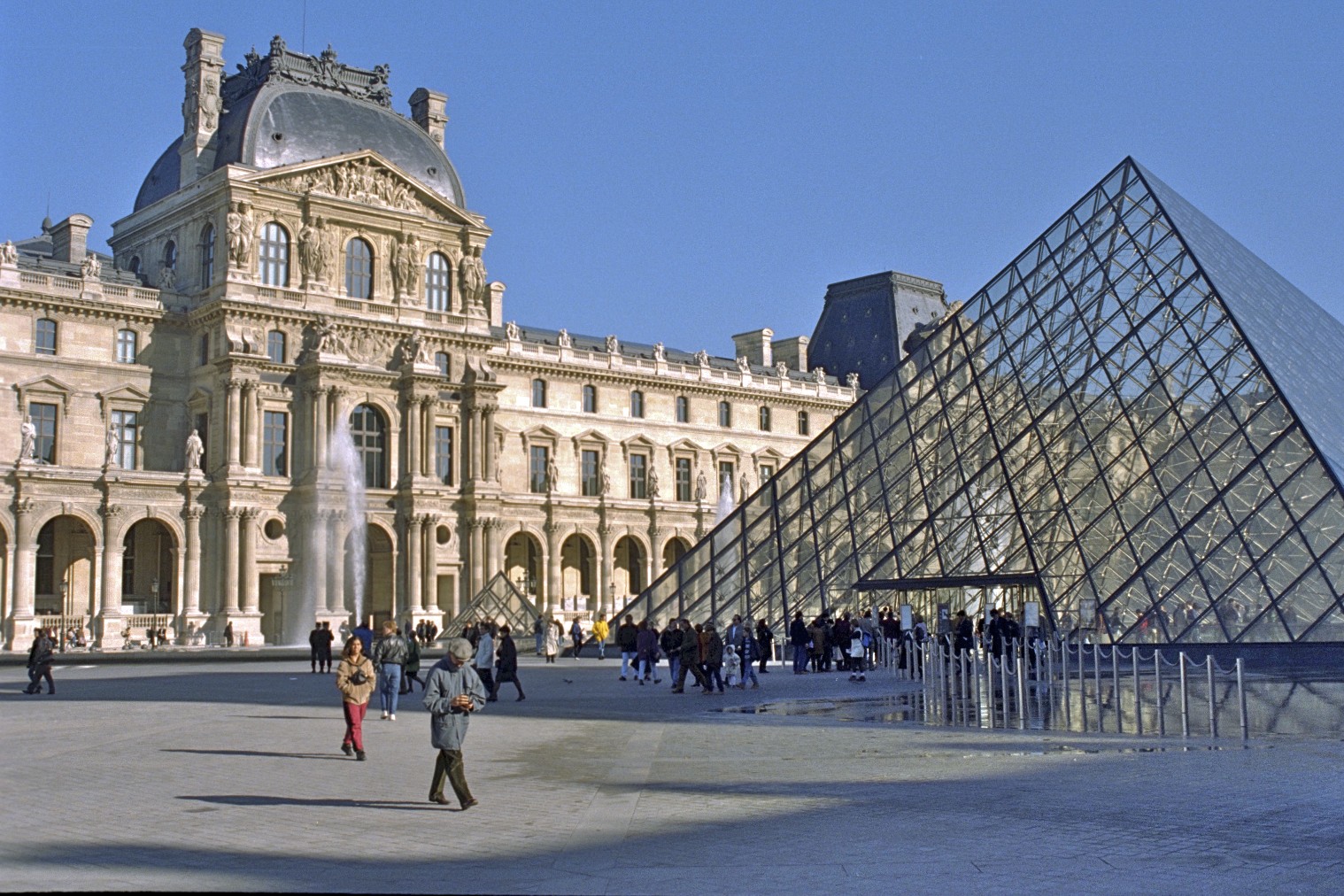Pyramide
We enter the inner courtyard of the Louvre where a pyramid of glass dominates the scene.
The glass pyramid by Chinese architect Pei is the new entrance to the Louvre, which has been enlarged underground and into the northern wing of the Palais de Louvre. Being of glass the pyramid allows us to see the surrounding palace and brings light into the museum entrance below.
This building was very controversial as many avant-garde buildings have been in Paris, but the commotion has settled down. Most people seem to like it, just as they like the Beaubourg, which also was controversial in the beginning. The French have a knack for adventure in modern architecture.
Palais de Louvre
Before we enter the Louvre museum we have a look at the Palais de Louvre.
The building history of the Louvre is long and complicated. In the beginning there was Philippe Auguste’s castle from around 1200. In the latter half of the 14th C. the castle was temporarily the residence and royal palace of Charles V. The oldest existing part was built in the 16th C., the south western corner of the part which surrounds Cour Carrée.
In the reign of Henri IV the south western wing, Flore, was erected. In the reigns of Louis XIII and XIV the square around Cour Carrée was completed. Louis XIV lived for a while in Louvre while he waited to move to Versailles. In the reign of Napoleon the southern wing was finally completed and the northern wing in the reign of Napoleon III.
The enormous colonnade at the front of the palace, facing east, was designed by Perrault, Le Vau and Le Brun in the time of Louis XIV in the 17th C. French style. Behind it is Cour Carrée where we can on the left see the Renaissance style of the oldest part and to the right its later French evolution into the Mannerist style.


